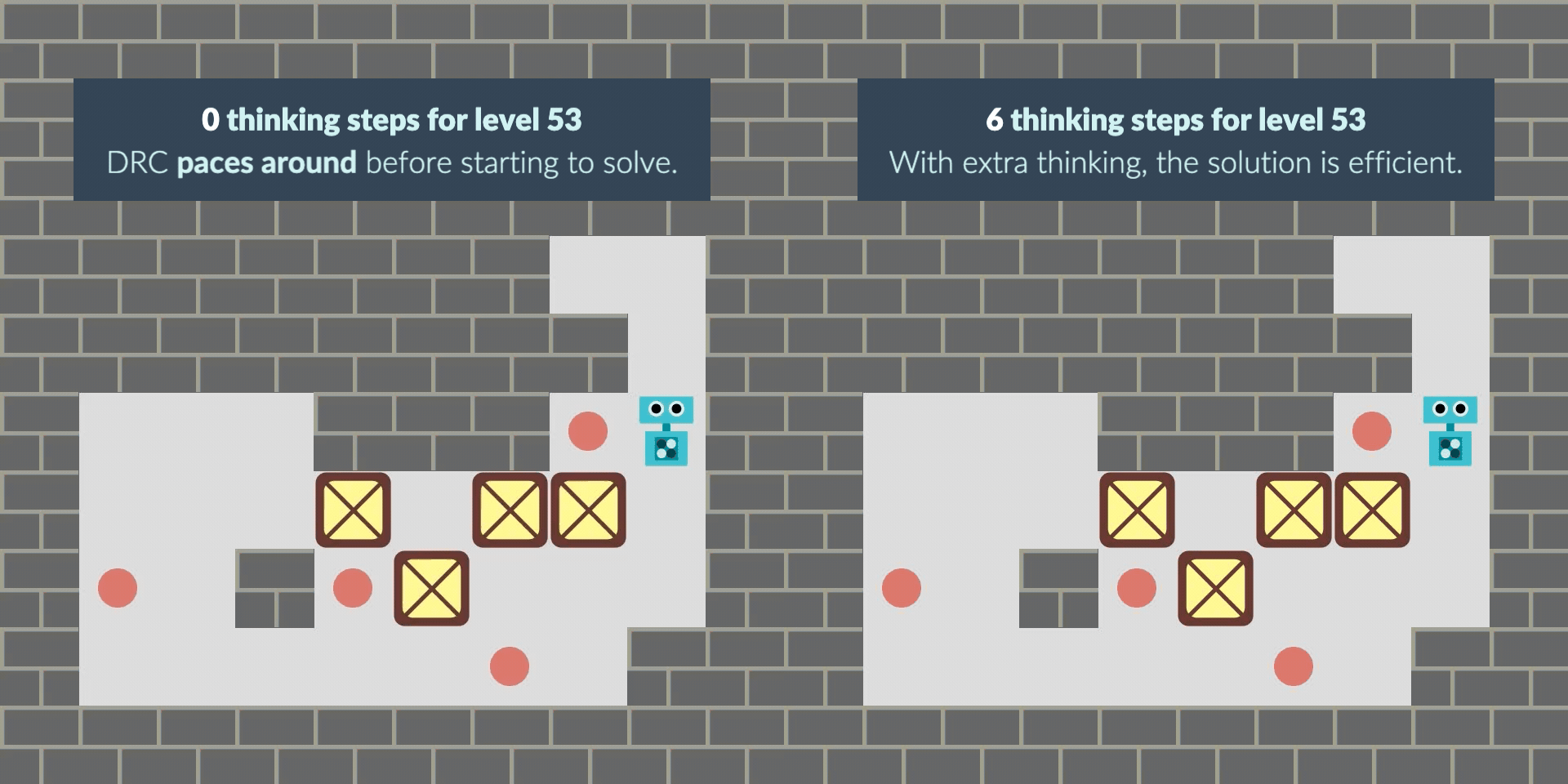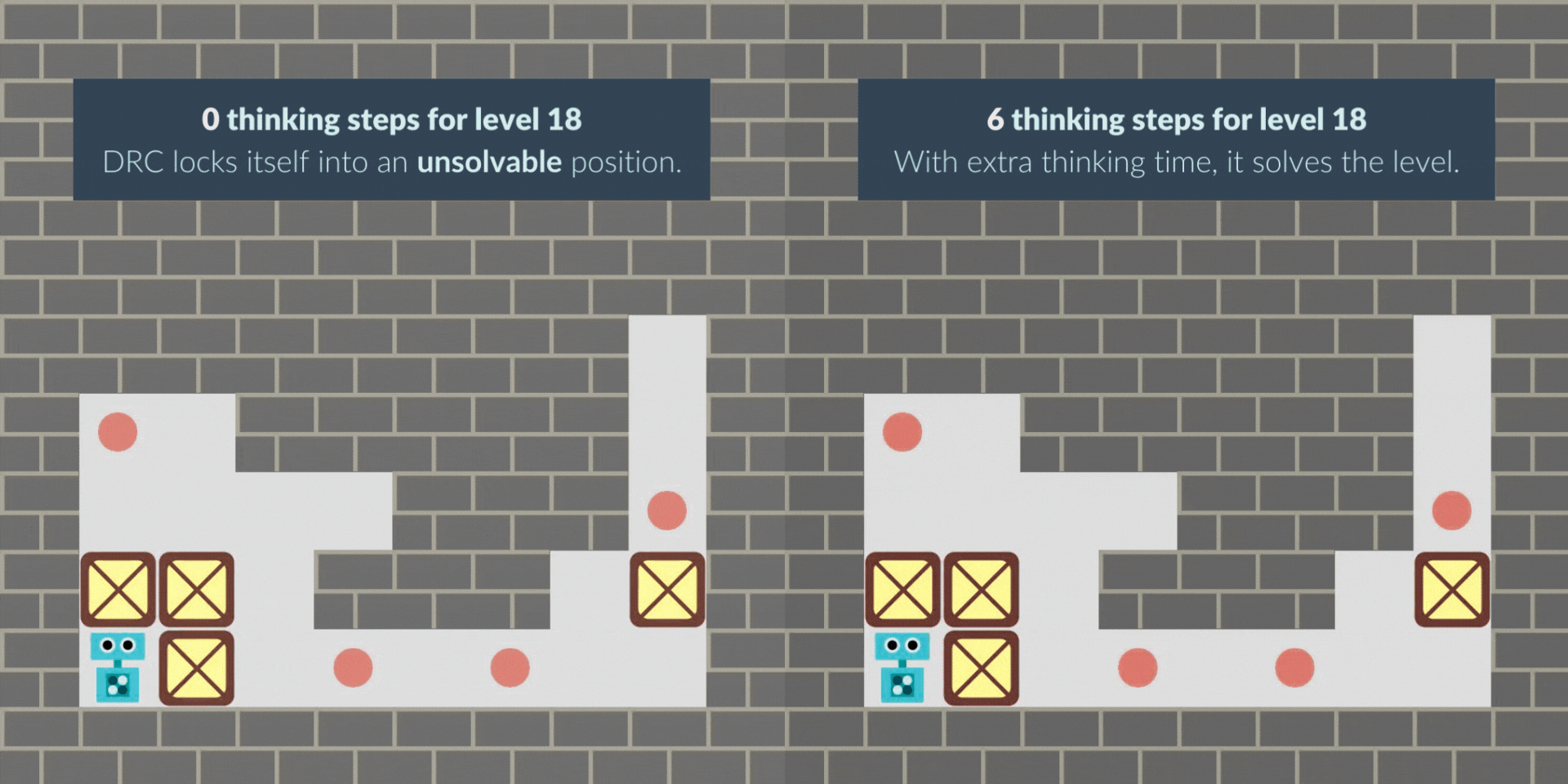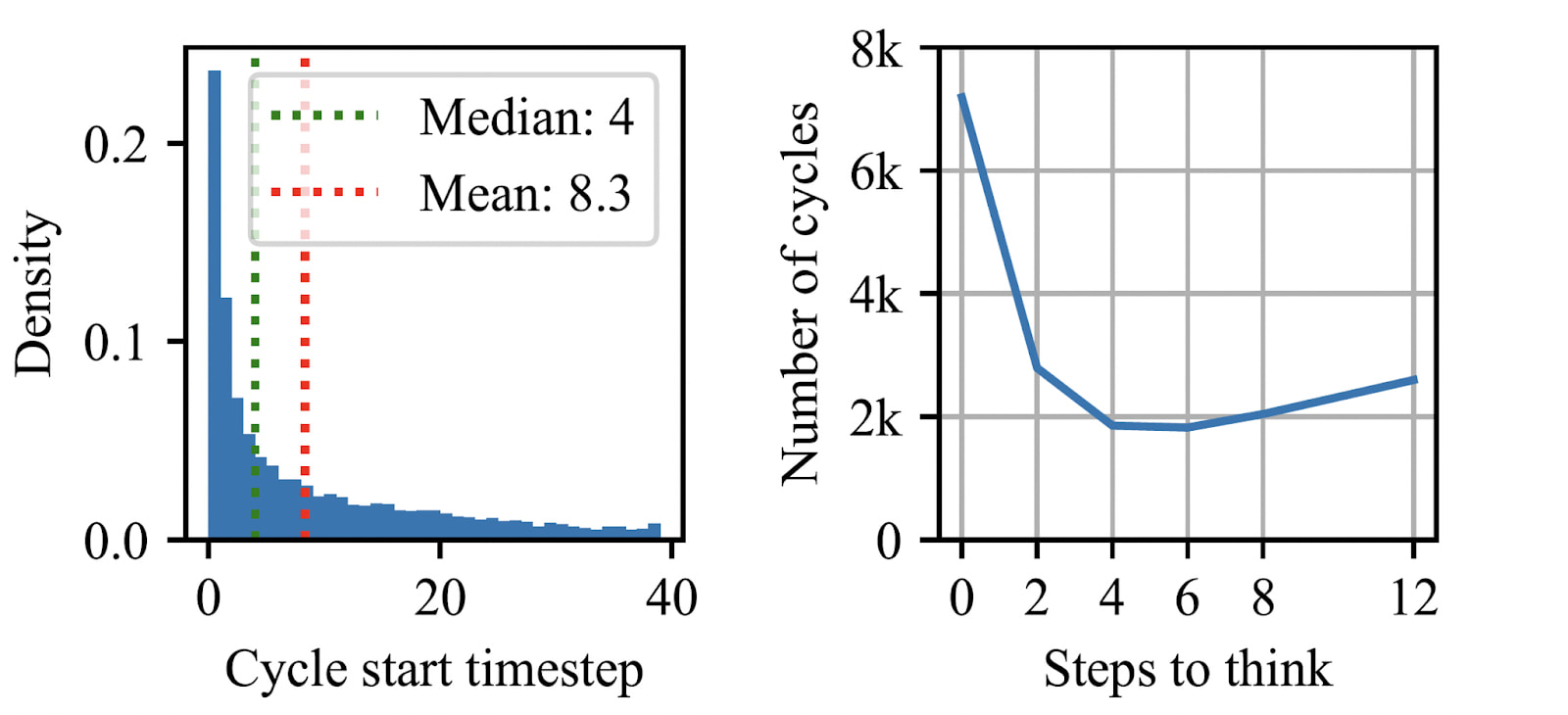What evidence is there for/against the hypothesis that this NN benefits from extra thinking time because it uses the extra time to do planning/lookahead/search?
As opposed to, for instance, using the extra time to perform more more complex convolutional feature extraction on the current state, effectively simulating a deeper (but non-recurrent) feedforward network?
(In Hubinger et al, "internally searching through a search space" is a necessary condition for being an "optimizer," and hence for being a "mesaoptimizer.")
I know this is a bit off topic, but I'd be super fascinated to see what happened if you tried this with a level where the middle hallway had been extended. Strategically, it changes nothing, but it introduces more meaningless steps into a solution. Does this interfere with planning? Or is the planning able to abstract over 'repeat strategically non-relevant step until next decision point'?
Specifically, what if you just duplicated this middle section a bunch.

I'm curious what you mean, but I don't entirely understand. If you give me a text representation of the level I'll run it! :) Or you can do so yourself
Here's the text representation for level 53
##########
##########
##########
####### #
######## #
# ###.@#
# $ $$ #
#. #.$ #
# . ##
##########
Extremely glad to see this! The Guez et al. model has long struck me as one of the best instances of a mesaoptimizer and it was a real shame that it was closed source. Looking forward to the interp findings!
Thank you!! I agree it's a really good mesa-optimizer candidate, it remains to see now exactly how good. It's a shame that I only found out about it about a year ago :)
I would love to hear what shard theorists make of this.
We could describe this AI as having learned a meta-shard - pace around at the start so that you have time to plan.
But at the point where we've allowed meta-shards, maybe we've already undermined the main claims of shard theory?
Maybe in this case it's a "confusion" shard? While it seems to be planning and produce optimizing behavior, it's not clear that it will behave as a utility maximizer.



